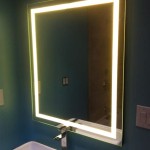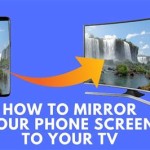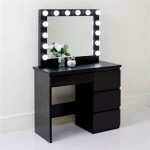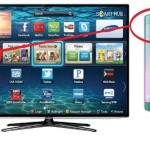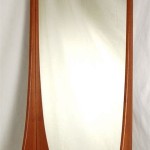How To Screen Mirror MacBook to Vizio Smart TV
Screen mirroring, also known as screen casting, provides a convenient method to display the content of a MacBook on a Vizio Smart TV. This process allows users to share presentations, watch videos, view photos, or browse the internet on a larger screen. Establishing a reliable connection requires understanding the compatible technologies and following specific steps related to both the MacBook and the Vizio Smart TV.
Different methods exist for screen mirroring a MacBook to a Vizio Smart TV. These methods generally rely on either built-in wireless technologies like AirPlay (for newer models) or third-party applications and devices. Each method offers advantages and disadvantages in terms of setup complexity, performance, and compatibility.
This article provides a comprehensive guide to the various methods available to screen mirror a MacBook to a Vizio Smart TV, detailing the necessary steps and troubleshooting common issues that might arise during the process. Prior to beginning, ensure both the MacBook and Vizio Smart TV are connected to the same Wi-Fi network. This is paramount for most wireless mirroring methods to function correctly.
AirPlay (for Compatible Vizio Smart TVs)
AirPlay is Apple's proprietary wireless streaming protocol, designed for seamless integration within the Apple ecosystem. While AirPlay was initially exclusive to Apple devices (Apple TVs), some newer Vizio Smart TV models include AirPlay 2 support. This built-in compatibility eliminates the need for third-party applications or devices for screen mirroring.
To determine if a Vizio Smart TV supports AirPlay, consult the TV’s specifications or manual. Look for explicit mentions of "AirPlay 2" or "Apple AirPlay" in the features list. Alternatively, navigate through the TV's settings menu, searching for an AirPlay option, typically found under network settings or system preferences.
If the Vizio Smart TV supports AirPlay, follow these steps to screen mirror from the MacBook:
- Ensure both the MacBook and Vizio Smart TV are connected to the same Wi-Fi network.
- On the MacBook, click the "Control Center" icon in the menu bar (usually located at the top right corner of the screen). The Control Center icon resembles two pill-shaped sliders.
- Within Control Center, locate and click the "Screen Mirroring" option. A list of available devices will appear.
- Select the Vizio Smart TV from the list of available devices. The Vizio Smart TV may appear with its model name or a user-defined name.
- If prompted, enter the AirPlay passcode displayed on the Vizio Smart TV screen into the MacBook. This code acts as a security measure to prevent unauthorized screen mirroring.
- The MacBook's screen should now be mirrored on the Vizio Smart TV.
To stop screen mirroring, repeat steps 1-3 and select "Stop Mirroring" from the Screen Mirroring menu on the MacBook.
Troubleshooting AirPlay issues involves verifying the Wi-Fi connection on both devices. A stable and strong Wi-Fi signal is crucial for uninterrupted screen mirroring. Update the firmware on both the MacBook and the Vizio Smart TV to ensure compatibility and access to the latest features and bug fixes. If problems persist, restart both devices and try the connection process again.
Using Third-Party Applications
For Vizio Smart TVs that do not support AirPlay, third-party applications offer alternative screen mirroring solutions. These applications typically involve installing software on both the MacBook and the Vizio Smart TV (if an app store is available on the TV) or using a web browser interface on the TV. Several screen mirroring applications are available, each with its own features, pricing, and performance characteristics.
Popular third-party screen mirroring applications include:
AirBeamTV:
This application is designed specifically for mirroring macOS to various Smart TV brands, including Vizio. It streams the Mac's screen directly to the TV without requiring additional hardware.Reflector:
Reflector is a screen mirroring receiver that can be installed on a computer connected to the TV or on certain streaming devices. The MacBook can then mirror its screen to Reflector using AirPlay, effectively enabling AirPlay-like functionality on non-AirPlay-enabled Vizio Smart TVs.LetsView:
LetsView is a free screen mirroring application that supports various platforms, including macOS and Smart TVs. It allows users to mirror the MacBook's screen to the Vizio Smart TV over a Wi-Fi network.
The specific setup process varies depending on the chosen application. However, the general steps are typically as follows:
- Download and install the screen mirroring application on the MacBook.
- If required, download and install the corresponding app on the Vizio Smart TV from its app store. Alternatively, use the TV's web browser to access a mirroring service provided by the application.
- Launch the application on both devices.
- Follow the on-screen instructions to establish a connection between the MacBook and the Vizio Smart TV. This may involve entering a code displayed on the TV into the MacBook's application.
When selecting a third-party application, prioritize those with positive user reviews and a proven track record of reliable performance. Consider the application's pricing model and whether it offers a free trial period to assess its suitability. Some applications may offer advanced features, such as screen recording or remote control capabilities.
Troubleshooting common issues with third-party applications involves ensuring that both the MacBook and the Vizio Smart TV are connected to the same Wi-Fi network. Disable any firewalls or security software that may be blocking the connection between the devices. Update the application to the latest version to address any known bugs or compatibility issues. Restarting both devices can also resolve connectivity problems.
Using HDMI Cable (Wired Connection)
While wireless screen mirroring offers convenience, a wired connection using an HDMI cable provides a reliable and high-quality alternative. This method eliminates potential issues related to Wi-Fi interference or compatibility problems with wireless protocols. Connecting the MacBook to the Vizio Smart TV via HDMI provides a direct and stable video and audio signal.
To use an HDMI cable for screen mirroring, follow these steps:
- Locate the HDMI port on the Vizio Smart TV. Most Vizio Smart TVs have multiple HDMI ports, typically labeled HDMI 1, HDMI 2, etc.
- Connect one end of the HDMI cable to the HDMI port on the Vizio Smart TV.
- Connect the other end of the HDMI cable to the MacBook. If the MacBook does not have a standard HDMI port, use an appropriate adapter, such as a USB-C to HDMI adapter.
- Turn on both the Vizio Smart TV and the MacBook.
- On the Vizio Smart TV, use the remote control to select the correct HDMI input corresponding to the port to which the MacBook is connected. This is usually done by pressing the "Input" or "Source" button on the remote and selecting the appropriate HDMI option.
- The MacBook's screen should now be displayed on the Vizio Smart TV.
On the MacBook, you may need to adjust the display settings to optimize the screen mirroring experience. This can be done by navigating to "System Preferences" > "Displays".
In the "Displays" preferences, you can choose to mirror the display or extend the display. Mirroring duplicates the MacBook's screen on the Vizio Smart TV. Extending the display treats the Vizio Smart TV as a second monitor, allowing you to spread applications and windows across both screens.
You can also adjust the resolution and refresh rate of the display in the "Displays" preferences to match the capabilities of the Vizio Smart TV. Experiment with different settings to achieve the best image quality.
Troubleshooting HDMI connection issues involves ensuring that the HDMI cable is securely connected to both the MacBook and the Vizio Smart TV. Try using a different HDMI cable to rule out the possibility of a faulty cable. Restart both devices and try the connection process again. Make sure the correct HDMI input is selected on the Vizio Smart TV. If the audio is not working, check the audio output settings on the MacBook to ensure that the audio is being routed to the HDMI output.
Using an HDMI connection offers a reliable and straightforward method to screen mirror a MacBook to a Vizio Smart TV, especially when wireless options are not available or performing optimally. The wired connection ensures a stable and high-quality video and audio signal, making it suitable for demanding applications such as video editing or gaming.
Selecting the most appropriate screen mirroring method depends on the user's specific needs and the capabilities of the Vizio Smart TV. AirPlay provides a seamless wireless experience for compatible models, while third-party applications offer broader compatibility. A wired HDMI connection delivers a dependable and high-quality alternative. Understanding the steps and troubleshooting tips outlined above will facilitate a successful screen mirroring experience.

How To Cast Your Macbook Air Screen Vizio Smart Tv Easy Guide

How To Airplay Screen Mirror Macbook Vizio Smart Tv Wireless

Vizio Support How To Mirror Your Screen Smart Tv 2024

How To Mirror Your Imac A Vizio Tv

How To Mirror Screen On A Vizio Tv Mirrroring

Complete Guide 3 Methods To Screen Mirror On Vizio Tv

How To Mirror Screen On A Vizio Tv Mirrroring

Complete Guide 3 Methods To Screen Mirror On Vizio Tv

How To Connect A Macbook Pro Or Air Tv Asurion

Airplay On Vizio Tv Easy Setup And Troubleshooting Tips
